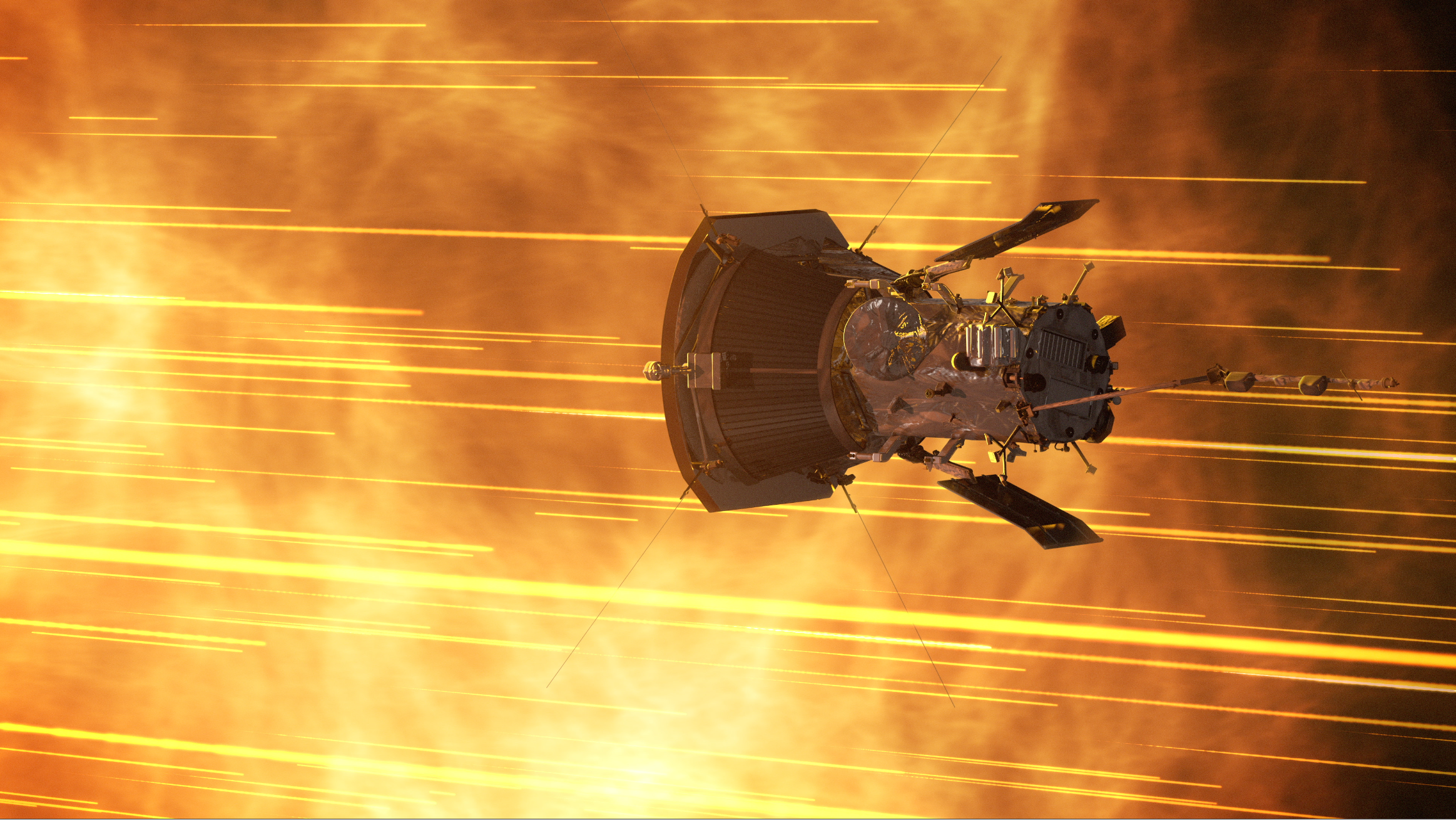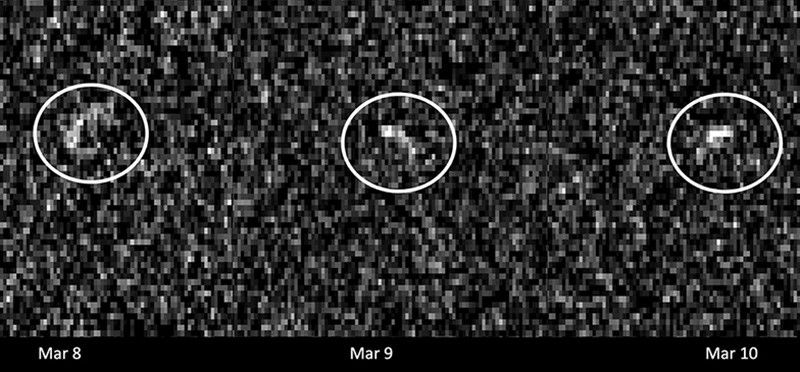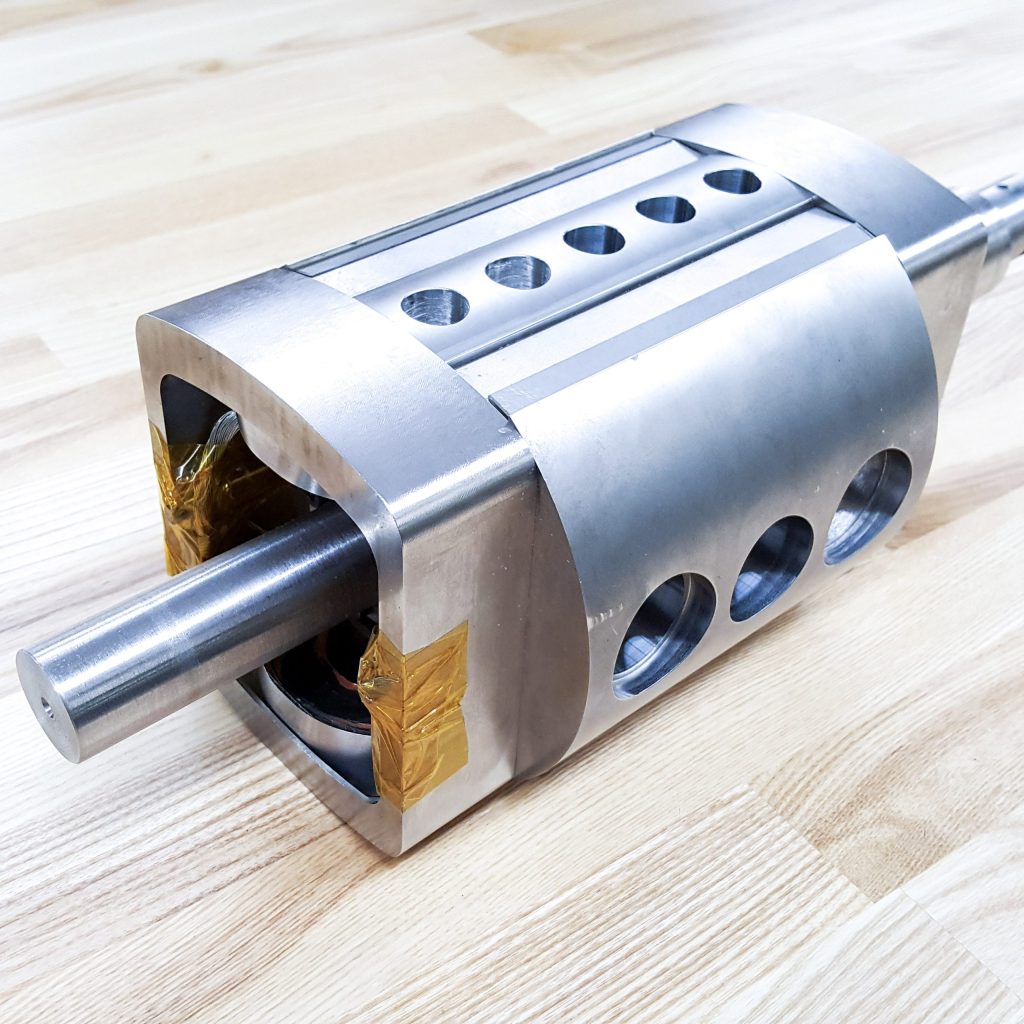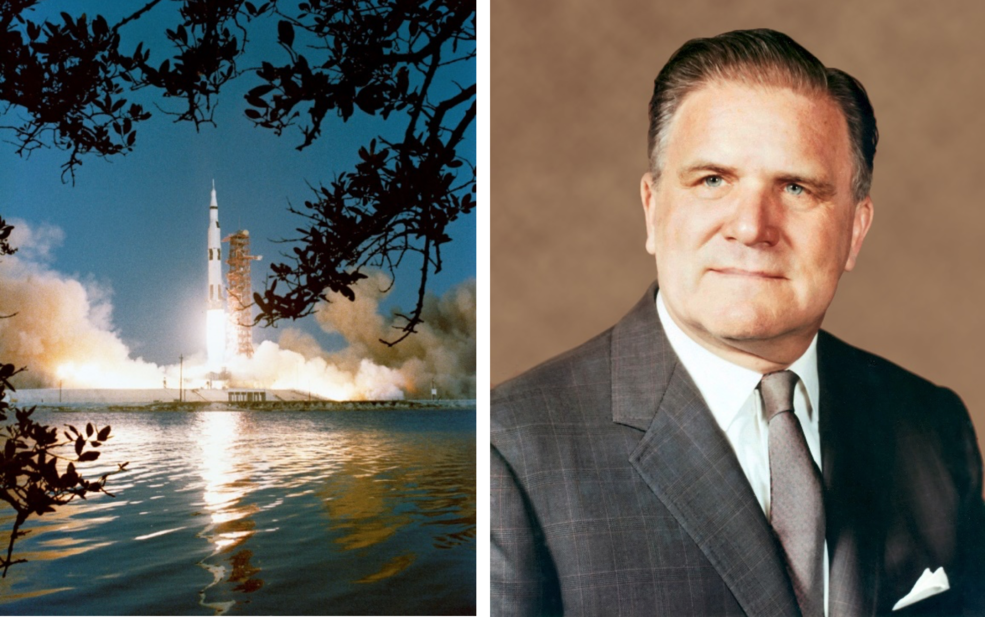On April 27, 1968, NASA Administrator James E. Webb approved the plan to fly the third Saturn V mission with a crew. Webb based his decision on the work of engineers who quickly understood and fixed the problems encountered during the Apollo 6 mission earlier in the month. According to the Apollo program plan NASA released in November 1967 (https://www.nasa.gov/history/50-years-ago-six-apollo-flights/), three uncrewed test flights of the Saturn V would qualify the Moon rocket for its first Earth orbital crewed flight, planned for late 1968. Webb’s decision brought the Moon landing closer.
In April, the second Saturn V test encountered significant problems during the launch of Apollo 6. During the last ten seconds of first stage burn, the rocket experienced longitudinal oscillations called “pogo effect.” Pogo occurred when a partial vacuum in the fuel and oxidizer feed lines reached the engine firing chamber causing the engine to skip. These oscillations then travelled up the axis of the launch vehicle resulting in intense vibration in the Command and Service Module (CSM) and causing some structural damage. Problems continued when, following separation of the second stage, two of the five J-2 engines shut down prematurely. The guidance system directed the remaining engines and the third stage to burn longer to propel the spacecraft into orbit. And when it was time for the third stage to reignite, it failed to do so, forcing Mission Control to choose an alternate mission plan to achieve some of the mission objectives.
Launch of Apollo 6 on April 4, 1968, the second all-up Saturn V test flight (left). Engineers solved problems encountered during that mission and NASA Administrator James Webb (right) decided that the next Saturn V would carry a crew.
Credits: NASA
The pogo problem was nothing new to the world of rocketry as early launch vehicles such as the Thor, and even the Titan II used for the Gemini program, had a similar experience, as did, to a lesser degree, the Apollo 4 mission. Arguing that any crew would have survived the flight aboard Apollo 6, Marshall Space Flight Center Director Wernher von Braun conceded that the “flight clearly left a lot to be desired. With three engines out, we just cannot go to the Moon.” Once the decision was made to place a crew on Apollo 8, solving the pogo issue took on critical importance. A recurrence of pogo on Apollo 8 could lead to the mission being aborted.
NASA formed a Pogo Working Group comprised of more than a 1,000 government and industry engineers to come up with a solution capable of verification through ground testing. The Working Group organized a rigorous investigation, which determined the key to mitigating the pogo effect included ‘de-tuning’ the F-1 engine to change the frequency of the vibration it produced and filling the charged prevalve cavities on the liquid oxygen (LOX) feed lines with helium gas from the tank pressurization system. Injecting helium into those lines prior to ignition would effectively work as a shock absorber by holding engine pulses into LOX lines and the vehicle structure preventing the oscillations from traveling up and down fuel and oxidizer feed lines.
Mathematical models were developed based upon previous flights and verified through a series of tests, while static test firings of first stages for upcoming missions were tested with pogo suppression hardware installed. On July 15, 1968, Apollo Program Director Sam Phillips concurred with the group’s solution.
Saturn V stages being lifted into test stands at the Mississippi Test Facility (MTF) for static firings: a first stage (left) and a second stage (middle). A test firing of a Saturn V second stage at MTF (right).
Credits: NASA
However, the failure of the J-2 engines on the second and third stages presented more of a challenge. Early on, the team investigating the failure discovered a leak of liquid hydrogen gas at 70 seconds into the burning of the second stage in engine number 2. This leak in the bellows section of the Augmented Spark Ignitor (ASI) fuel line started as a small leak in a defect which eventually resulted in catastrophic failure. The investigation determined that unfortunately, the failure of engine two was compounded when, as combustion pressure began to fall, sensing equipment triggered the shutdown of a different engine, number three. The restart failure of the J-2 engine in the third stage was chalked up to the same defect in the ASI.
How was such a major problem missed by engineers during testing? It turns out that during ground testing, frost on the lines from cold propellant temperatures had added a degree of extra protection from vibrations in the bellows section. Because this same process does not occur in the vacuum of space, fatigue cracks emerged. Vacuum tests of eight ASI lines at Rocketdyne facilities resulted in the failure of all eight, each time in the same bellows section. The fix required the removal of the bellows sections from subsequent lines and additional vacuum testing on all upper second and third stage engine flexible lines.
In August 1968, tests were conducted at the Mississippi Test Facility, now the John C. Stennis Space Center, on the first stage pogo suppression system and second stage redesigned fuel lines for the J-2 engines. The success of these tests gave NASA the confidence to continue plans for a crewed Apollo 8 mission that December. With this decision, the Moon landing came ever closer.





























